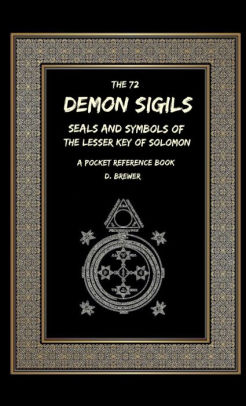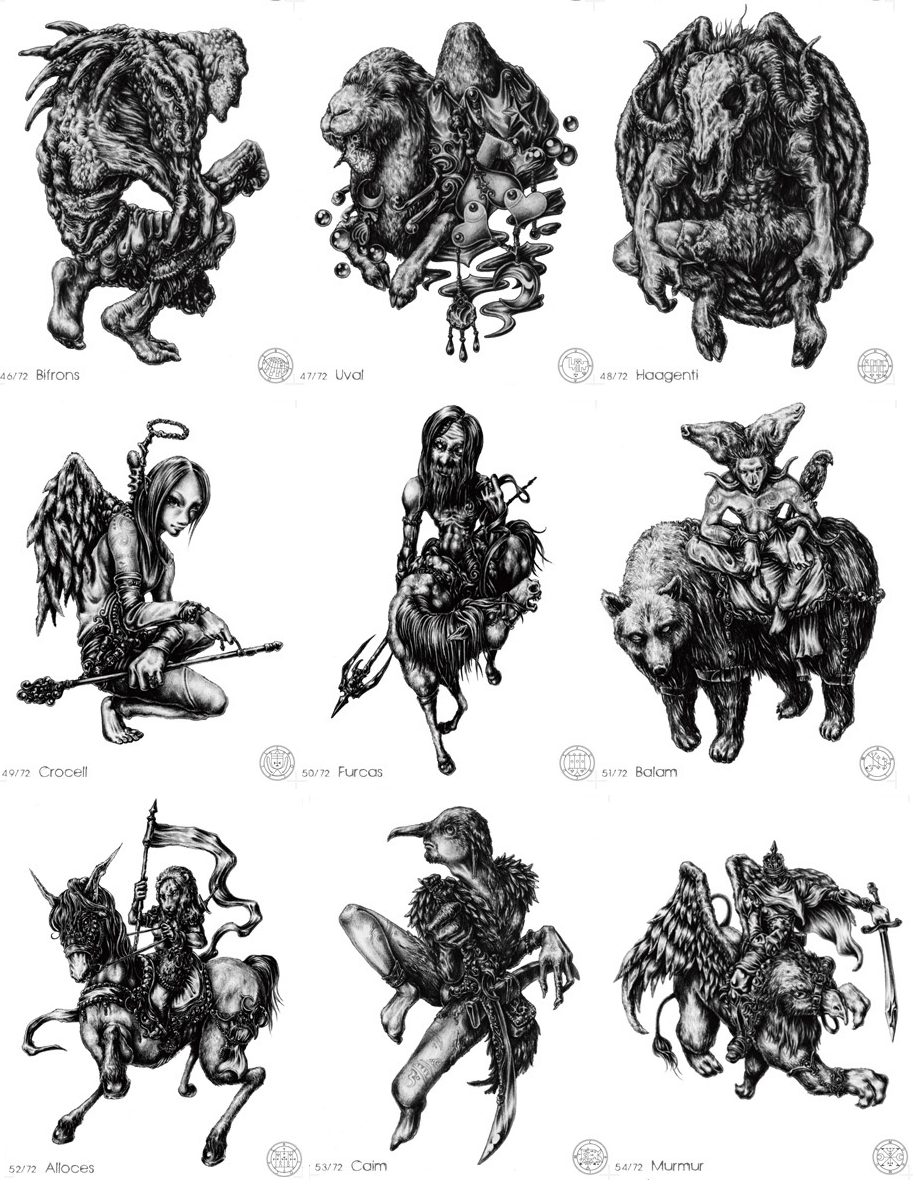- Lesser Key Of Solomon Devil's Trap
- Lesser Key Of Solomon Hardcover
- Lesser Key Of Solomon Spirits Sigils
- Lesser Key Of Solomon English
- Lesser Key Of Solomon Audiobook
It is possible that the Key of Solomon inspired later works, particularly the 17th-century grimoire also known as Clavicula Salomonis Regis, Lesser Key of Solomon or Lemegeton, although there are many differences between the books. The Lesser Key of Solomon or Lemegeton Clavicula Salomonis (the Clavicula Salomonis, or Key of Solomon is an earlier book on the subject), is an anonymous 17th century grimoire, and one of the most popular books of demonology. 72 The Complete lesser key of Solomon. T'orth to uisible appenrance to int'orm and direct me in all things that I shall seem good and lazut'ul unto the Creator and Thee, O thou great and powerful angel Samael. I inaocate, adjure, command t most powerfully call you t'orth t'rom your orders and place of residence to aisible appearance in. The Lesser Key of Solomon or The Goetia translated by Aleister Crowley and Samuel Liddell MacGregor Mathers is one of the greatest masterpieces of occult and esoteric literature. Brilliant and sparkling, this book is a stunning portrait of the 72 sigils.
The Lesser Key of Solomon or Clavicula Salomonis , is an anonymous 17th-century grimoire, and one of the most popular books of demonology.

It appeared in the 17th century, but much was taken from texts of the 16th century, including the Pseudomonarchia Daemonum, by Johann Weyer, and late-medieval grimoires. It is likely that books by Jewish kabbalists and Muslim mystics were also inspirations. Some of the material in the first section, concerning the summoning of demons, dates to the 14th century or earlier.
The book claims that it was originally written by King Solomon, although this is certainly incorrect. The titles of nobility (such as the French Marquis or Germanic Earl) assigned to the demons were not in use in his time, nor were the prayers to Jesus and the Christian Trinity included in the text (Solomon’s birth predated Jesus Christ’s birth by more than 900 years).
The Lesser Key of Solomon contains detailed descriptions of spirits and the conjurations needed to invoke and oblige them to do the will of the conjurer (referred to as the “exorcist”). It details the protective signs and rituals to be performed, the actions necessary to prevent the spirits from gaining control, the preparations prior to the invocations, and instructions on how to make the necessary instruments for the execution of these rituals.
The several original copies extant vary considerably in detail and in the spellings of the spirits’ names. Contemporary editions are widely available in print and on the Internet.
The Goetia: The Lesser Key of Solomon the King is a 1904 translation of the text by Samuel Mathers and Aleister Crowley. It is essentially a manual that purports to give instructions for summoning 72 different spirits.
The Lesser Key of Solomon is divided into five parts.

Ars Goetia
The first section, called Ars Goetia, contains descriptions of the seventy-two demons that Solomon is said to have evoked and confined in a brass vessel sealed by magic symbols, and that he obliged to work for him. It gives instructions on constructing a similar brass vessel, and using the proper magic formula to safely call up those demons.
It deals with the evocation of all classes of spirits, evil, indifferent and good; its opening Rites are those of Paimon, Orias, Astaroth and the whole cohort of Infernus. The second part, or Theurgia Goëtia, deals with the spirits of the cardinal points and their inferiors. These are mixed natures, some good and some evil.
The Ars Theurgia Goetia is the second section of The Lesser Key of Solomon. It explains the names, characteristics and seals of the 31 aerial spirits (called chiefs, emperors, kings and princes) that King Solomon invoked and confined. It also explains the protections against them, the names of their servant spirits, the conjurations to invoke them, and their nature, that is both good and evil.
Ars Paulina
The first chapter refers on how to deal with the angels of the several hours of the day (meaning day and night), to their seals, their nature, their servants (called Dukes), the relation of these angels with the seven planets known at that time, the proper astrological aspects to invoke them, their names (in a couple of cases coinciding with two of the seventy-two demons mentioned in the Ars Goetia, the conjuration and the invocation to call them, the Table of practice.
The second chapter concerns the angels that rule over the zodiacal signs and each degree of every sign, their relation with the four elements, Fire, Earth, Water and Air, their names, and their seals. These are called here the angels of men, because all persons are born under a zodiacal sign, with the Sun at a specific degree of it.
Ars Almadel
This section contains a collection of prayers (some of them divided in several parts) mixed with kabbalistic and magical words in several languages (i.e. Hebrew, Greek, etc.), how the prayers must be said, and the relation that these rituals have to the understanding of all sciences. It mentions the aspects of the Moon in relation with the prayers. It also says that the prayers act as an invocation to God’s angels. According to the book, the correct spelling of the prayers gives the knowledge of the science related to each one and also a good memory, stability of mind, and eloquence. This chapter presents the precepts that have to be observed to obtain a good result.
Lesser Key Of Solomon Devil's Trap
The Lesser Key is one of the best-known grimoires, primarily for the first section, the Goetia, which features charming descriptions of the 72 demons conjured by Solomon, along with illustrations of their sigils, and the tools required for summoning.
Although the content varies from edition to edition, The lesser Key is generally considered to contain five books:
- Goetia, a list of 72 evil spirits, or demons, and instructions for their invocation (source).
- Theurgia Goetia, a list of spirits that are 'by nature good and evill That is, one part is good, and the other part Evill' (Robert Turner translation). It bears notable similarity to Trithemius' Steganographia (source).
- Ars Paulina, which describes the magic attributed to the Apostle Paul. This is taken from the second book of Steganographia (source).
- Ars Almadel, which describes the construction and use of an alter for summoning angels (source).
- Ars Notoria, or the notary art, describes Solomon's communication with God. It is the oldest material in this grimoire, and dates back to the 13th century, or possibly earlier (source).
The grimoires Book of IncantationsBook of Treasure Spirits excerpts this grimoire.

The grimoire The Book of Spirits influenced this grimoire.
Lesser Key Of Solomon Hardcover
This grimoire is in the tradition of Solomon
This grimoire mentions the demon Amaymon
This grimoire partially derived from the grimoires The Archidoxes of MagicThe Magical CalendarPseudomonarchia DaemonumHeptameronSteganographia
Robert Turner translated this grimoire.
Demons (73)
Angels (1)
Aerial spirits (154)
Spells (1)
Timeline of related events
1200
1400
1496
Publication of the Heptameron (this grimoire partially derived from Heptameron)1500
1527
The Archidoxes of Magic written (this grimoire partially derived from The Archidoxes of Magic)1536
Publication of De praestigiis daemonum (this grimoire partially derived from Pseudomonarchia Daemonum)1600
1619
Birth of Robert Turner (translated this grimoire)1620
Publication of The Magical Calendar (this grimoire partially derived from The Magical Calendar)1641
Lesser Key Of Solomon Spirits Sigils
Publication of the Lesser Key of Solomon1655
Publication of the Book of Treasure Spirits (excerpts this grimoire)1664
Death of Robert Turner (translated this grimoire)1800
Lesser Key Of Solomon English
1810
Lesser Key Of Solomon Audiobook

Comments are closed.